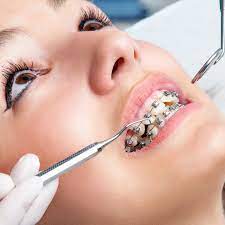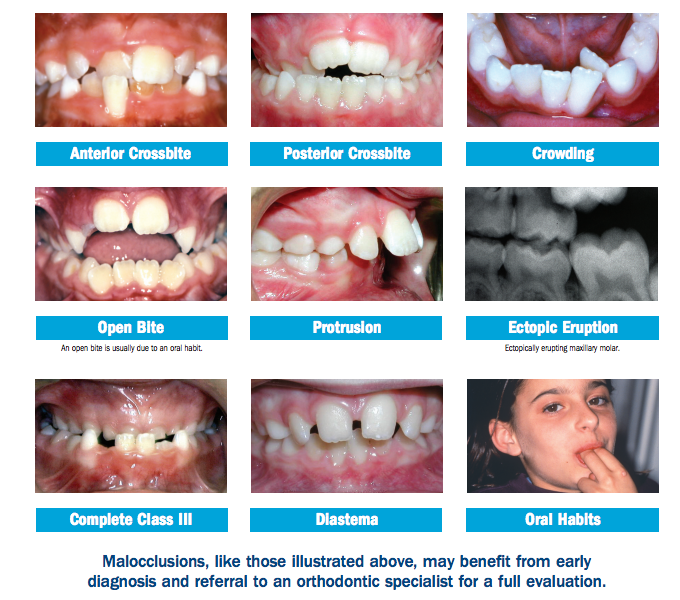Excitement About Causey Orthodontics
8 Easy Facts About Causey Orthodontics Shown
Table of ContentsThe 5-Minute Rule for Causey Orthodontics3 Easy Facts About Causey Orthodontics DescribedThe Best Strategy To Use For Causey OrthodonticsNot known Facts About Causey OrthodonticsFascination About Causey Orthodontics
Ignoring occlusal partnerships, it was normal to get rid of teeth for a range of oral problems, such as malalignment or overcrowding. The principle of an intact dentition was not commonly appreciated in those days, making bite relationships seem irrelevant. In the late 1800s, the principle of occlusion was vital for creating reliable prosthetic substitute teeth.As these concepts of prosthetic occlusion proceeded, it became an important tool for dental care. It was in 1890 that the job and impact of Dr. Edwards H. Angle started to be felt, with his payment to modern orthodontics specifically noteworthy. Concentrated on prosthodontics, he educated in Pennsylvania and Minnesota before guiding his attention towards oral occlusion and the therapies required to maintain it as a typical problem, thus ending up being understood as the "father of contemporary orthodontics".

The principle of suitable occlusion, as postulated by Angle and incorporated right into a classification system, enabled a shift towards dealing with malocclusion, which is any type of discrepancy from normal occlusion. Having a complete collection of teeth on both arches was very demanded in orthodontic treatment because of the demand for exact relationships in between them.
The 6-Minute Rule for Causey Orthodontics
As occlusion became the crucial priority, facial percentages and looks were overlooked - orthodontist services. To attain optimal occlusals without making use of external forces, Angle proposed that having perfect occlusion was the very best means to acquire optimal face visual appeals. With the death of time, it came to be quite apparent that even a remarkable occlusion was not ideal when taken into consideration from an aesthetic point of view
It came to be noticeable that orthodontic treatment might change mandibular development, leading to the formation of functional jaw orthopedics in Europe and extraoral pressure procedures in the US. These days, both useful devices and extraoral tools are used around the globe with the aim of modifying development patterns and types. Consequently, pursuing real, or a minimum of enhanced, jaw connections had come to be the major goal of treatment by the mid-20th century.
Some Ideas on Causey Orthodontics You Should Know
 The American Journal of Orthodontics was developed for this purpose in 1915; before it, there were no clinical objectives to comply with, neither any precise category system and brackets that lacked functions. Till the mid-1970s, dental braces were made by covering metal around each tooth. With improvements in adhesives, it came to be possible to rather bond metal brackets to the teeth.
The American Journal of Orthodontics was developed for this purpose in 1915; before it, there were no clinical objectives to comply with, neither any precise category system and brackets that lacked functions. Till the mid-1970s, dental braces were made by covering metal around each tooth. With improvements in adhesives, it came to be possible to rather bond metal brackets to the teeth.This has had meaningful effects on orthodontic therapies that are carried out routinely, and these are: 1. Appropriate interarchal relationships 2. Correct crown angulation (tip) 3.
The benefit of the design exists in its bracket and archwire combination, which calls for just very little cable flexing from the orthodontist or clinician (family orthodontics). It's aptly named hereafter function: the angle of the slot and density of the brace base ultimately determine where each tooth is positioned with little requirement for added adjustment
Not known Incorrect Statements About Causey Orthodontics
Both of these systems employed the same brackets for every tooth and required the bending of an archwire in 3 airplanes for situating teeth in their preferred placements, with these bends dictating best placements. When it comes to orthodontic home appliances, they are separated right into two kinds: detachable and repaired. Detachable devices can be tackled and off by the client as required.

Hence, mostly all modern set devices can be thought about variants on this edgewise home appliance system. Early 20th-century orthodontist Edward Angle made a significant payment to the world of dental care. He created 4 distinct device systems that have been made use of as the basis for lots of orthodontic treatments today, preventing a few exemptions.
The Ultimate Guide To Causey Orthodontics

The cord ended in a thread, and to relocate ahead, an adjustable nut was utilized, which enabled for an increase in area. By ligation, each private tooth was connected to this large archwire (emergency orthodontist near me). Due to its minimal series of movement, Angle was unable to attain accurate tooth placing with an E-arch
These tubes held a soldered pin, which can be repositioned at each consultation in order to move them in position. Called the "bone-growing appliance", this device was theorized to motivate much healthier bone growth due to its possibility for moving force directly to the origins. Nevertheless, implementing it proved frustrating actually.